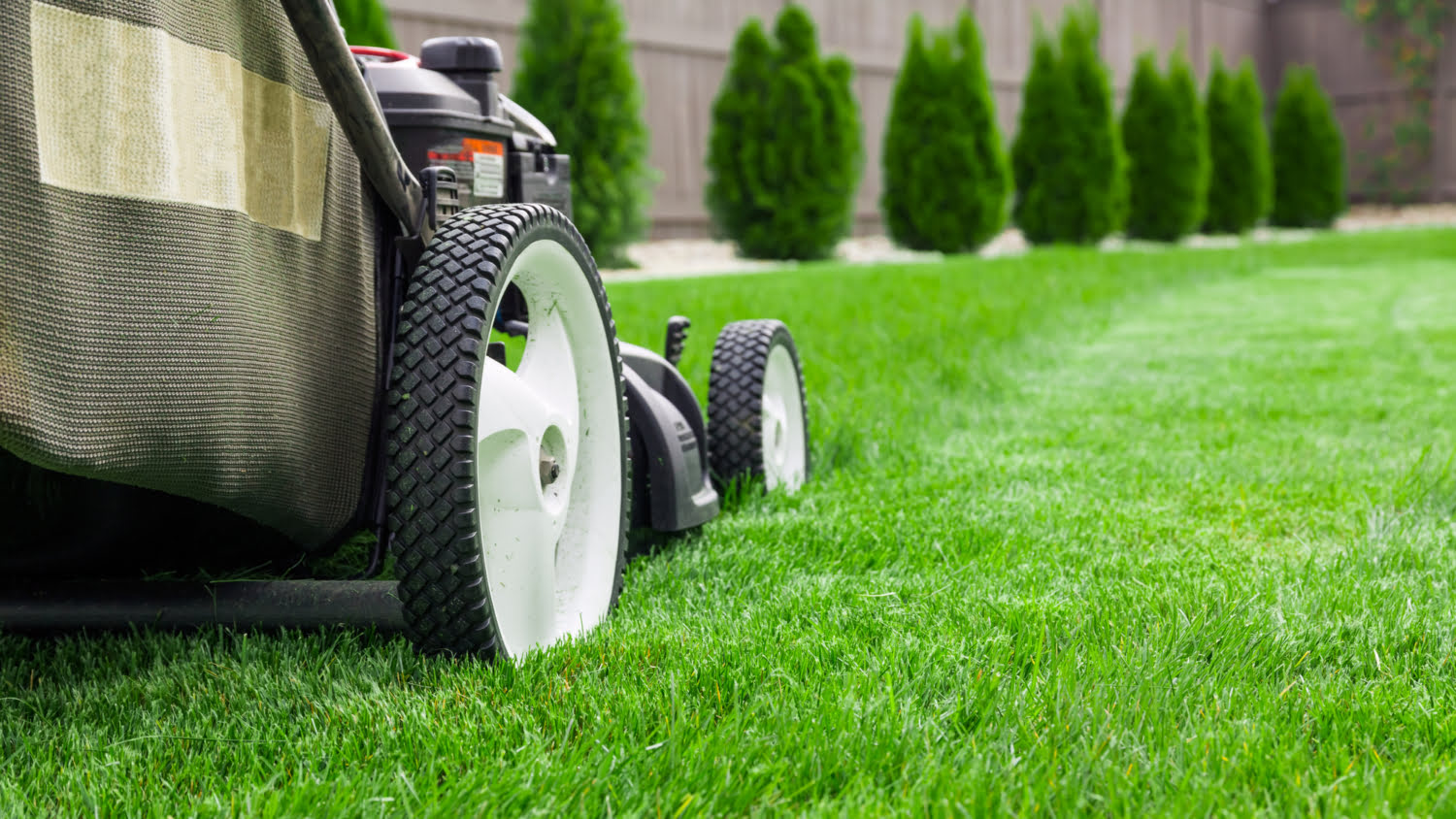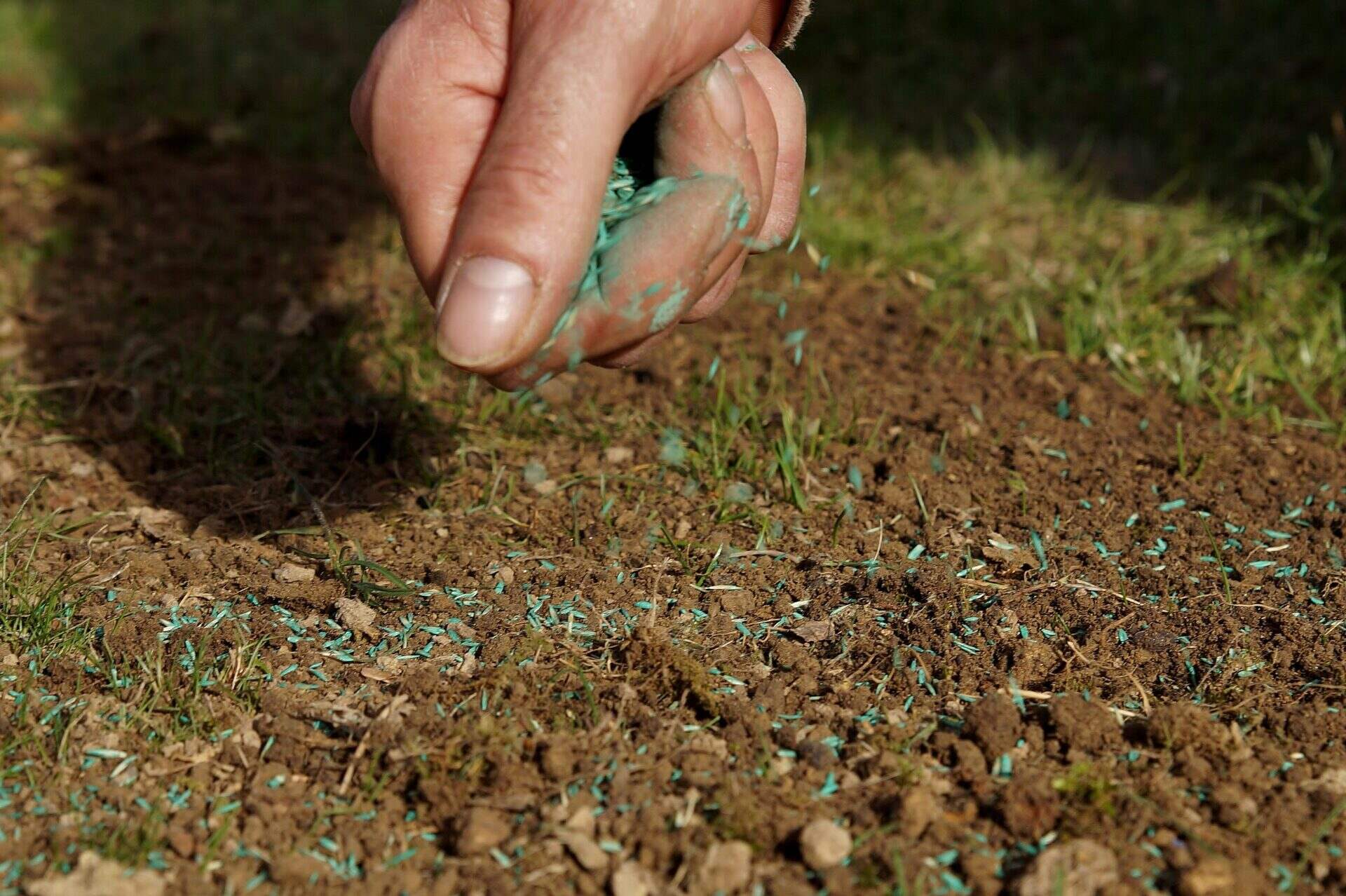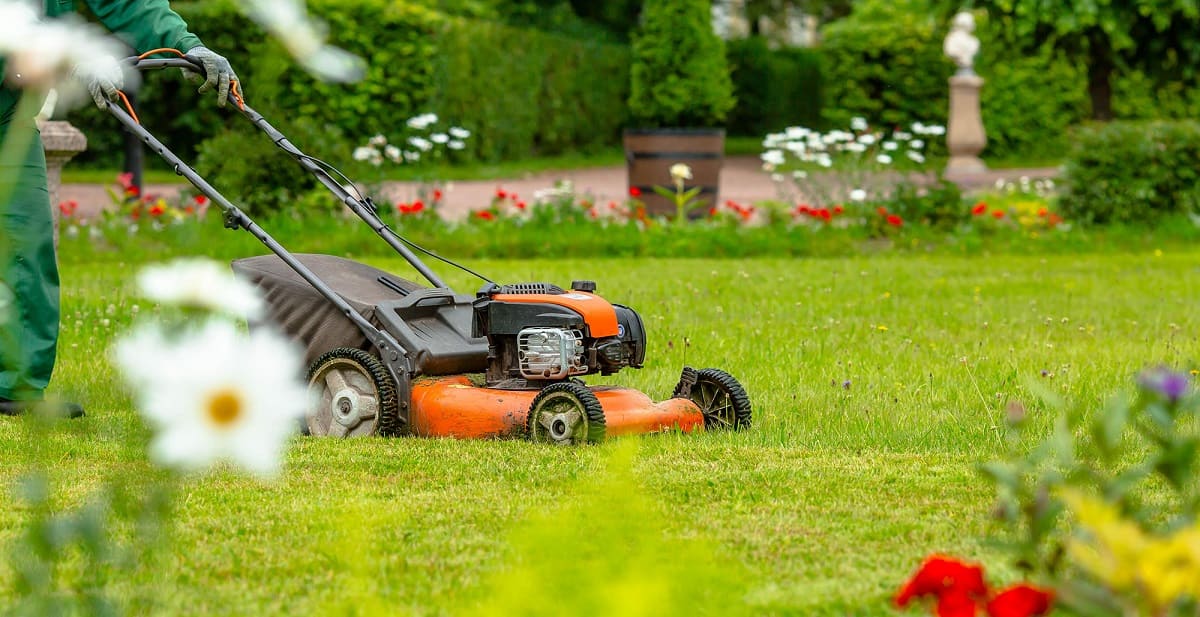Home>Garden Essentials>When To Plant Grass Seed In PA In Spring


Garden Essentials
When To Plant Grass Seed In PA In Spring
Modified: September 2, 2024
Looking to start a garden? Learn when is the best time to plant grass seed in PA during the spring season. Find helpful tips and tricks here.
(Many of the links in this article redirect to a specific reviewed product. Your purchase of these products through affiliate links helps to generate commission for Storables.com, at no extra cost. Learn more)
Introduction
Welcome to the wonderful world of gardening! There’s nothing quite like the feeling of sprucing up your outdoor space and turning it into a lush and vibrant garden. Whether you’re a seasoned green thumb or just starting out, understanding the art of planting grass seed is essential to achieving a beautiful and healthy lawn.
When it comes to Pennsylvania, the state’s diverse climate and geographical regions present unique challenges and opportunities for gardening enthusiasts. Knowing the optimal time to plant grass seed in PA can mean the difference between a thriving lawn and a lackluster one.
But fear not! In this article, we’ll delve into the best practices for planting grass seed in Pennsylvania during the spring season. We’ll cover everything from the types of grass seed to consider, factors to take into account before planting, and the exact steps you need to follow to ensure success.
So, grab your gardening gloves and let’s dive in!
Key Takeaways:
- Plant cool-season grass seeds like Kentucky bluegrass and tall fescue in Pennsylvania during spring for optimal growth. Consider soil type, sunlight, and proper watering for a lush and resilient lawn.
- Prepare your lawn by clearing the area, testing the soil, and using the right seeding techniques. Maintain the newly seeded lawn with proper watering, mowing, and weed control for long-term success.
Read more: When To Plant Grass Seed In The Spring
Understanding Grass Seed Types
Before we delve into the best time to plant grass seed in PA, it’s important to understand the different types of grass seeds and their characteristics. In general, there are two main categories of grass seeds: cool-season grasses and warm-season grasses.
Cool-Season Grass Seeds
Cool-season grasses are well-suited for Pennsylvania’s climate, which experiences cold winters and mild summers. These grasses thrive in temperatures between 60 to 75 degrees Fahrenheit, making spring and fall the ideal times for planting them.
Popular cool-season grasses for Pennsylvania include Kentucky bluegrass, perennial ryegrass, and tall fescue. Kentucky bluegrass is known for its rich green color, fine texture, and ability to withstand heavy foot traffic. Perennial ryegrass is prized for its quick germination and lush appearance. Tall fescue, on the other hand, is known for its durability and ability to tolerate heat and drought.
Cool-season grasses have the advantage of being able to withstand cold temperatures and can recover well from harsh winters. They also tend to have active growth during the spring and fall, allowing them to establish deeper root systems and better withstand hot and dry summer conditions.
Warm-Season Grass Seeds
Warm-season grasses, as the name suggests, thrive in warmer climates with temperatures ranging from 75 to 90 degrees Fahrenheit. They’re not as well-suited for Pennsylvania’s climate but can be used in certain regions of the state where temperatures are consistently high during the summer months.
Popular warm-season grasses include Bermuda grass, Zoysia grass, and Bahiagrass. Bermuda grass is known for its excellent heat and drought tolerance, making it a favorite for southern regions of Pennsylvania. Zoysia grass is highly resilient and forms a dense carpet-like lawn. Bahiagrass is often used in areas with poor soil quality and can tolerate drought and heat.
While warm-season grasses may not be the go-to choice for most of Pennsylvania, there are some regions in the southeastern part of the state where they can thrive with proper care and maintenance.
Now that we understand the different types of grass seeds, let’s explore the factors to consider before planting them to ensure optimal growth and a beautiful lawn.
Factors to Consider Before Planting Grass Seed
Planting grass seed requires careful consideration of several factors to ensure the best possible growth and results. Before diving into the actual planting process, let’s explore the key factors you should consider before sowing those seeds.
Read more: When To Start Seeds For Spring Planting
Climate and Hardiness Zone
The climate in Pennsylvania varies across the state, so it’s essential to take into account the specific conditions in your area. The United States Department of Agriculture (USDA) has divided the country into different hardiness zones based on average minimum winter temperatures. Understanding your hardiness zone can help you select the most suitable grass species that will thrive in your region’s specific climate.
For example, most areas in Pennsylvania fall within hardiness zones 5 and 6. Cool-season grasses like Kentucky bluegrass and tall fescue are well-suited for these zones. However, if you’re located in the southeastern part of the state where temperatures can be warmer, you may consider warm-season grasses like Bermuda grass or Zoysia grass.
Soil Type and Preparation
The type of soil in your garden plays a crucial role in the success of your grass seedlings. Different grass species have different soil requirements, so it’s important to understand your soil type and make necessary preparations.
Start by performing a soil test to determine the pH level and nutrient composition of your soil. This will help you identify any necessary amendments or adjustments needed before planting. Most grasses prefer a pH level between 6 and 7, which is slightly acidic to neutral.
In addition to pH levels, understanding the texture and drainage capacity of your soil is essential. Sandy soils drain quickly but may require more frequent watering, while clay soils retain water and may need amendments to improve drainage. Adding organic matter, such as compost or peat moss, can help improve soil structure and nutrient content.
Sunlight and Shade Requirements
The amount of sunlight your lawn receives is another vital factor to consider when selecting grass seed and planning your planting strategy. Different grass species have varying levels of tolerance to shade and sunlight.
If your lawn receives full sun for most of the day, cool-season grasses like Kentucky bluegrass and perennial ryegrass will thrive. These grasses require at least 4-6 hours of direct sunlight daily. On the other hand, if your lawn has areas that are shaded for a significant portion of the day, consider shade-tolerant grasses like fine fescue or shade mixtures specifically designed for low-light conditions.
By considering these factors – climate and hardiness zone, soil type and preparation, and sunlight and shade requirements – you’ll be well-equipped to choose the most suitable grass seed for your lawn. With these factors in mind, let’s move on to the best time to plant grass seed in Pennsylvania.
Best Time to Plant Grass Seed in PA
Timing is crucial when it comes to planting grass seed in Pennsylvania. While the exact timing may vary based on specific local conditions, there are generally two optimal seasons for planting grass seed in PA: spring and fall. In this section, we’ll focus on spring planting and the benefits it offers for successful germination and growth.
Spring Planting
Spring is an excellent time to plant grass seed in Pennsylvania because the soil temperature starts to warm up, and there is typically sufficient moisture available. As the temperatures rise above freezing and the ground begins to thaw, the soil becomes more receptive to seed germination and root development.
One of the main advantages of spring planting is the ideal growing conditions it provides for cool-season grasses, which are commonly used in Pennsylvania. As the weather gradually warms up, these grasses experience rapid growth and establish strong root systems during the spring, allowing them to survive the hot summer months.
Germination and Growth
When you plant grass seed in the spring, the seeds have the advantage of optimal soil temperature and moisture levels, creating a favorable environment for germination. With regular watering and proper care, you can expect to see new grass sprouting within 7-21 days, depending on the specific grass species you’ve chosen.
During the spring season, cool-season grasses have an extended growing period before the heat of summer arrives. This allows them to develop stronger, deeper roots, which results in a healthier and more resilient lawn. By establishing a well-rooted lawn in the spring, you’ll give your grass a better chance of withstanding drought conditions and other stresses that may occur later in the season.
It’s worth noting that while spring is generally a favorable time for grass seed germination and growth, it’s important to note that timing can vary depending on weather patterns and local conditions. Pay attention to soil temperature and avoid planting too early when the ground is still frozen or too late, when summer heat begins to set in.
Now that you know the best time to plant grass seed in Pennsylvania, let’s explore the steps to prepare your lawn for seeding to ensure optimal results.
How to Prepare the Lawn for Seeding
Preparing the lawn before seeding is a crucial step that sets the groundwork for successful grass growth. Taking the time to properly prepare the area will ensure that the grass seed has the best chance of germination and establishment. Here are the key steps to follow when preparing your lawn for seeding.
Clearing the Area
Before you start the preparation process, it’s important to clear the area of any debris, weeds, and existing grass. Remove any rocks, branches, or other objects that may interfere with the seed’s contact with the soil. This will create a clean and smooth surface for the new grass to establish itself.
Soil Testing and Amendments
Testing your soil is an essential step in determining its pH level and nutrient content. You can purchase a soil testing kit or send a sample to a local agricultural extension office for analysis. The results will guide you in making any necessary amendments to optimize soil conditions for grass growth.
If the pH level is too high or too low, you may need to adjust it by adding lime or sulfur accordingly. Additionally, you may need to add organic matter, such as compost or peat moss, to improve soil structure and fertility. Follow the recommendations from your soil test results and ensure that any amendments are thoroughly mixed into the top few inches of the soil.
Leveling and Raking
Once the area is clear and the soil amendments have been applied, it’s time to level the surface. Using a garden rake or leveling tool, break up any compacted soil and smooth out any uneven areas. This step helps ensure even seed distribution and proper water drainage across the lawn.
After leveling, lightly rake the soil to create a loose, fine texture. This will provide a gentle bed for the grass seeds to settle into and establish good contact with the soil for optimal germination.
By following these steps, you’ll have a well-prepared lawn ready for seeding. Next, we’ll explore different seeding techniques to help you achieve the best possible results with your grass seed.
Seeding Techniques
Now that you have prepared your lawn, it’s time to move on to the exciting step of seeding. By choosing the right seeding techniques, you can ensure even coverage and maximize the chances of successful germination and establishment. Let’s explore the key seeding techniques you can utilize in your lawn care process.
Seeding Methods
There are two primary methods of seeding: traditional hand seeding and using a lawn spreader. Each method has its advantages depending on the size of your lawn and personal preferences.
1. Traditional Hand Seeding: This method involves broadcasting the grass seed evenly across the prepared area using your hand. It allows for greater control when it comes to targeting specific spots or areas of the lawn. However, it can be time-consuming and may be challenging to achieve consistent coverage, especially for larger areas.
2. Lawn Spreader: Using a lawn spreader is a popular choice for larger areas as it provides more even coverage. There are two types of spreaders: drop spreaders and broadcast spreaders. Drop spreaders release the seed directly downward, which is ideal for precision and accuracy. Broadcast spreaders, on the other hand, fling the seed outward in a wider pattern, making them suitable for larger areas. Whichever type you choose, make sure to calibrate the spreader properly to achieve the recommended seed application rate.
Read more: When To Plant Grass Seed In Missouri Spring
Spreading Grass Seed
Regardless of the seeding method you choose, it’s important to ensure even distribution of the grass seed. This can be achieved by dividing the seed into smaller portions and making multiple passes over the area, crisscrossing your path for thorough coverage.
Pay attention to the recommended seeding rates for the specific grass species you are planting. Proper seed coverage will allow for healthy growth without overcrowding, promoting good root development and overall lawn health.
Caring for Newly Seeded Lawn
Once the grass seed is evenly spread over the lawn, it’s crucial to take proper care of the newly seeded area for optimal growth and establishment. Here are a few key tips to keep in mind:
1. Watering: Adequate watering is essential to ensure germination and prevent the seed from drying out. Water the newly seeded area lightly but frequently, keeping the soil moist but not waterlogged. Aim for watering once or twice daily, depending on the weather conditions.
2. Mowing and Fertilizing: Avoid mowing the newly seeded lawn until the grass has reached a height of 3-4 inches. When it’s time to mow, set the mower to a higher setting to avoid stressing the young grass. As for fertilizing, wait until the grass has been established for a few months before applying any fertilizer.
3. Weed Control: Keep an eye out for any weeds that may emerge alongside the new grass. Manual weed removal is recommended in the early stages to avoid damaging the fragile seedlings. Once the grass is more established, you can consider applying a pre-emergent herbicide to further prevent weed growth.
By utilizing appropriate seeding techniques, such as choosing the right seeding method and ensuring even distribution, along with proper care and maintenance of your newly seeded lawn, you’ll be well on your way to enjoying a lush and healthy grassy paradise in no time.
Lawn Maintenance after Seeding
Once you have successfully seeded your lawn, it’s important to continue providing proper care and maintenance to ensure the health and long-term success of your grass. Here are some key factors to consider when it comes to maintaining your newly seeded lawn.
Watering Requirements
Watering is crucial during the initial stages of seed germination and establishment. The goal is to keep the soil consistently moist without overwatering or allowing it to dry out. Here are some watering guidelines to follow:
1. Frequency: Water the newly seeded lawn lightly but frequently, aiming for daily watering or every other day.
2. Watering Depth: Water deeply enough to moisten the top inch of soil. This encourages the roots to grow deeper into the soil and establishes a stronger foundation for the grass.
3. Time of Day: Water in the early morning or late afternoon to minimize evaporation and allow the grass to dry before nighttime, reducing the risk of disease.
As the grass starts to mature and establish stronger roots, gradually reduce the frequency of watering and provide deeper soakings less often. This will encourage the grass roots to grow deeper into the soil, making them more resilient to drought conditions.
Read more: How To Plant Grass In The Spring
Mowing and Fertilizing
After the newly seeded lawn begins to grow, it’s important to pay attention to mowing and fertilizing practices to encourage healthy growth and overall lawn resilience.
1. Mowing: Wait until the grass reaches a height of 3-4 inches before the first mowing. Set your mower to a higher position, leaving the grass blades longer. This promotes photosynthesis and allows the new grass to establish stronger roots. After the initial mowing, gradually lower the cutting height to the recommended level for your grass species.
2. Fertilizing: It’s generally best to wait until the grass has been established for a few months before applying a fertilizer. Follow the recommended schedule and opt for a slow-release fertilizer to provide a steady supply of nutrients to the growing grass. Be cautious not to over-fertilize, as it can lead to excessive growth and stress on the lawn.
Weed Control
Proper weed control is essential to maintain the health and appearance of your newly seeded lawn. Here are a few tips for effective weed control:
1. Hand Weeding: In the early stages, manually remove any weeds that appear, being careful not to disturb the new grass seedlings.
2. Pre-Emergent Herbicides: Once the grass has established and is more robust, consider applying a pre-emergent herbicide to prevent weed seeds from germinating.
3. Spot Treatments: For any persistent or problematic weeds, opt for spot treatments using selective herbicides that target specific types of weeds without damaging the surrounding grass.
By following these lawn maintenance practices, including proper watering, mowing, fertilizing, and weed control, you’ll not only help your newly seeded lawn establish itself but also maintain its healthy and vibrant appearance for years to come. Happy gardening!
Conclusion
Planting grass seed in Pennsylvania can be a rewarding endeavor that transforms your outdoor space into a lush and vibrant sanctuary. By understanding the different grass seed types, considering factors such as climate, soil, and sunlight requirements, and following proper preparation and maintenance techniques, you can achieve a healthy and beautiful lawn.
When it comes to the best time to plant grass seed in PA, spring emerges as an ideal season for successful germination and growth. The warming temperatures and ample moisture create favorable conditions for cool-season grasses to establish strong root systems and thrive before the onset of hot summer weather.
By preparing the lawn properly, including clearing the area, conducting soil tests and amendments, and ensuring an even surface, you provide the optimal foundation for the grass seed to take root and flourish. Seeding techniques like hand seeding or using a lawn spreader allow for proper seed distribution and coverage.
Once the grass seed is sown, consistent care and maintenance are essential. Adequate watering, mowing, and fertilization ensure healthy growth and establish a resilient and vibrant lawn. Paying attention to weed control will maintain the integrity and appearance of your newly seeded lawn.
In conclusion, with proper knowledge and implementation of the best practices for planting grass seed in PA, you have the power to create a thriving and breathtaking lawn. Remember to consider the unique characteristics of your region, select the appropriate grass seed types, and follow the recommended timing and techniques. With dedication and TLC, your lawn will be the envy of the neighborhood, providing a beautiful space for you to relax, play, and enjoy the great outdoors.
Frequently Asked Questions about When To Plant Grass Seed In PA In Spring
Was this page helpful?
At Storables.com, we guarantee accurate and reliable information. Our content, validated by Expert Board Contributors, is crafted following stringent Editorial Policies. We're committed to providing you with well-researched, expert-backed insights for all your informational needs.











0 thoughts on “When To Plant Grass Seed In PA In Spring”